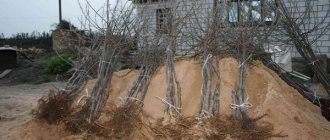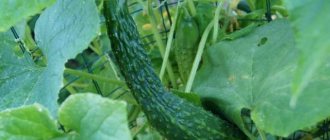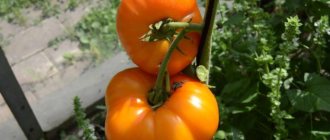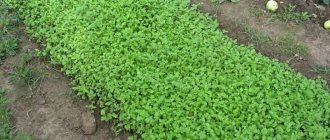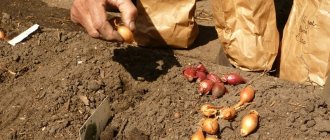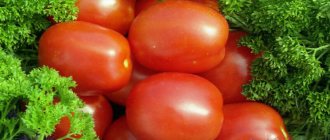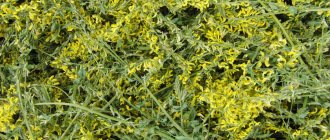Features of planting in the cold season
Planting parsley in the fall is practiced due to the fact that such plants produce an early harvest and are more resistant to all kinds of diseases. The root crops of this parsley are usually larger than those planted in the spring. And the harvest of greens often begins in March and early April.
Those who are concerned about the question of which variety of this crop is best to plant before winter in the Moscow region should pay attention to:
- Common leaf;
- Festival early;
- Delicate aroma.
The first of the varieties is characterized by exceptionally high productivity, while the second has early germination. Lovers of fragrant greens should pay attention to the latest variety.
But almost all varieties and varieties of parsley can easily overwinter in the climatic conditions of the Middle Zone.
Dill varieties for autumn sowing
One of the key factors for a rich harvest of greenery during autumn planting is the correct choice of seeds. Priority is given to early-ripening crop varieties, which are characterized by intensive development and resistance to stemming.
Dill varieties for sowing before winter:
- Aurora. An early ripening bush variety with high yield. Openwork greens with a rich aroma are ready for cutting 3 weeks after germination;
- An early miracle. Ripens within a month after the sprouts appear, during this period it grows up to 30 cm. It is highly resistant to unfavorable climate conditions;
- Grenadier. An early ripening variety, unpretentious to growing conditions. The aromatic green mass is ready for consumption 30-35 days after germination;
- Gribovsky. Produces abundant foliage with a bluish tint that is ready for cutting within 30-40 days of sprouting. The variety is able to consistently tolerate low temperature conditions;
- Umbrella. Ripens in 35-40 days, resistant to temperature changes, high-yielding variety.
For planting dill before winter, it is also recommended to use mid-ripening varieties of the crop, as well as late-ripening ones, to ensure the constant availability of fresh herbs with delicate foliage in the beds:
Read also: Sanhetia care at home photo
- Vologda lace. It is characterized by high resistance to stemming and a neutral reaction to abnormal climatic conditions. Ripening time – 40-45 days;
- Alligator. A bush crop, capable of producing a bountiful harvest, since it does not form umbrellas for a long time, is ready for cutting within 40-45 days;
- Kibray. It has large rosettes up to 40 cm high, maturity occurs in 40-45 days, and has the ability to not form umbrellas for a long time. The yield of the crop allows you to collect up to 3 kg of green mass from 1 m²;
- Anna. Mid-season variety with very fragrant greens, ripening time - 45-50 days;
- Borey. Tall variety - up to 140 cm - late ripening, distinguished by the absence of yellowing of the foliage, ready for use in 50-55 days;
- Firework. Late-ripening crop, ripens 2 months after the sprouts appear, practically does not bolt, the leaves do not turn yellow;
- Brawler. A powerful bush plant of late ripening, the greens begin to be cut 60-70 days after germination, the foliage has a bluish tint and a waxy coating.
Dill Vologda lace
Late-ripening versions manage to grow precisely by the period when early-ripening ones are already in the “umbrella” stage and the foliage becomes coarser.
When choosing a dill variety for winter sowing, a number of nuances should be taken into account:
- you need to know how long it will take for the selected planting material to sprout;
- early ripening versions grow faster than late varieties, but they do not tend to grow a lush mass with dense foliage;
- in ultra-early versions the stem quickly forms;
- Bush dill seeds tolerate frost well; these crop samples slowly form a stem.
When choosing seed material for growing winter dill at the dacha, it is worth knowing that among the popular solutions, varieties such as Salyut, Kibray, and Umbrella are most often noted.
The best time to plant parsley before winter
The best time to sow parsley before winter, like other “winter” vegetables, completely depends on the region where the gardener lives. After all, the air temperature and the onset of winter are of primary importance. And it comes at different times: in the Far North it happens already at the end of September, October, and in Kuban - in December or January.
Sow parsley as late as possible, when stable but not yet severe frosts have set in. That is, the soil should be covered with the first crust of ice on top, but still be suitable for processing. In the Middle Zone, such weather phenomena are often observed in mid-November.
Negative temperatures during planting are observed only at night, but they are stable. Seeds are immersed in the soil when the daily minimum is -2/-3 degrees. Thanks to this, they will have time to swell before truly severe frosts set in, but will not sprout. If you sow too early, the greens will sprout, and frost will simply destroy the sprouts.
In regions where there is no stable transition of temperatures through zero, it is allowed to plant parsley at slightly positive temperatures. But then the sprouted plant will require cover in case of frost. But the family will be provided with fresh herbs almost all year round.
Popular varieties
Before buying seeds, they decide for what purpose to grow greens, what type is needed: leaf or root. The choice of variety depends on the area where parsley grows. Zoned varieties of parsley are planted in cold regions of the country so that the plants quickly adapt to the local climate. In the south of the country and in the Moscow region, you can sow parsley of almost any variety before winter.
Leaf view
The leafy variety is distinguished by lush greenery and an unusual aroma. After cutting, the foliage grows back. During the growing season they harvest up to 3 times.
| Name | Growing season in days | Description |
| Bogatyr | 70-75 | Harvest parsley, fragrant, large triangular leaves on long petioles |
| Gloria | 60-65 | An early, productive variety with a low rosette and large leaves, easily transported |
| Titanium | 85-95 | Mid-season greens, semi-vertical rosette, cutting can be done 3 times per season, yield 3 kg per 1 sq. m. |
| Aster | 65 | Curly leaves, early ripening variety, dense rosette |
| Common leaf | 70 | High yield, smooth, green, fragrant leaves with dissection. One socket holds up to 80 sheets |
| Enchantress | 80-90 | Rosette 30-40 cm high, triangular foliage, long thin petiole, weight 85-100 g, yield 3-4 kg per square |
| Breeze | 75-80 | Plant weight 60-80 g, height up to 70 cm, can be stored for a long time after cutting |
| Esmeralda | 65-75 | Average ripeness, weight of one bush 40-50 g, up to 30 leaves in a rosette, height about 20 cm, 1-1.2 kg per square meter. m. |
Root parsley
Parsley roots are used in soups, salads, and pickles. They are consumed fresh, dried and pickled. They help in the treatment of many diseases and are used in folk medicine.
| Name | Ripening time in days | Characteristic |
| Alba | 165-180 | The variety is late, the root weighs 250-300 g, without lateral roots, is well stored in winter, the yield is 5 kg per 1 sq. m. |
| Sugar | 90-100 | Early variety, root crop 20-30 cm high, weight 40-70 g, white-gray color, for summer use |
| The final | 125-130 | The weight of the cone-shaped root is 150-200 g, the yield is 2-2.5 kg per square meter. m. |
| Harvest | 125-135 | Root length 20 cm, fruits juicy, disease resistant, weight 100-120 g, length up to 23 cm, yield 3-3.5 kg |
| Doctor | 120-135 | Winter-hardy, mid-season, roots resistant to cracking |
| Good morning | 120-135 | High-yielding variety 3-4 kg per square meter. m, weight 100-120 g, height up to 37 cm, large leaves are well stored |
Preparing seeds for planting in open ground
An important factor in obtaining a decent harvest of early spring greens is the correct preparation of seeds for sowing. Many gardeners fail simply because they simply throw planting material into the ground without subjecting it to any preliminary preparation. Experienced gardeners also remember well that pre-winter sowing requires a fairly large number of seeds, since the danger of falling out is greater.
Main stages of preparatory work:
- sorting;
- soaking and disinfection;
- vernalization or pelleting.
Each stage is equally important for success.
At the sorting stage, seeds are distributed based on their size and general appearance, and the presence of damage. Too little planting material may be too weak. At the same time, damaged seeds will rot and will not sprout. Autumn sowing requires special attention to the health of the material.
See also
Recipes for inducing menstruation with parsley seeds, how much to eat to speed it up
Read
Soaking, combined with disinfection, is carried out both to activate the swelling process and to increase the plant’s immunity. To prevent parsley from getting sick immediately after germination, it is soaked in a solution of potassium permanganate or boric acid. Copper sulfate is also used.
A modern method of achieving the same goal is sparging. This is the name of the process in which seeds are placed in warm water (temperature 20 degrees Celsius) and oxygen is pumped through a compressor.
Vernalization and pelleting are used to ensure uniform sowing and increase plant vigor. With the first method, the seeds are kept on ice until it evaporates in a wooden box, and with the second, they are covered with a mixture of fertilizers, humus and peat. It is important that each seed appears separately in such a substance.
Rules and landing algorithm
As an unpretentious garden plant, dill develops well with minimal care, but for a rich harvest of fresh herbs it is important to take into account the agricultural technology of the crop.
Selecting a location and preparing beds
When thinking about whether it is possible to allocate an area for winter dill after herbs, it is worth knowing that the best predecessors for it are cucumbers, tomatoes, cabbage, and potatoes. Beds after carrots, aromatic herbs, and celery are not suitable. Dill is not grown next to fennel, as they cross-pollinate with each other, which leads to a decrease in the taste of both crops.
Dill is cultivated in an area open to the sun, protected from the prevailing winds. Land that is not highly fertile is suitable for cultivation. The culture loves loose, neutral soils: on acidic soils the greens turn yellow, on alkaline soils there is a reddish tint to the foliage.
To plant seeds, you need to dig the bed to a depth of a spade, remove weeds, roots and other debris. If necessary, add organic matter in the form of rotted manure and compost, although spicy greens do not really need any fertilizers.
Landing technology
Autumn sowing of vitamin crops is carried out in dry soil without additional seed preparation. When planning how to properly plant dill before winter, you should know that gardeners practice different methods:
- fan-shaped Seed material is scattered over a dug and leveled bed. Using a rake, seeds are planted in the ground or covered with soil mixture prepared in advance;
- tape First, grooves are made into which the seeds are placed and covered with substrate; it usually consists of humus and peat.
Ribbon planting of dill before winter
The depth of seed placement with the winter technology of planting garden greens is within 3-3.5 cm, while with the spring sowing option this parameter does not exceed 2 cm. This approach is necessary to prevent freezing of the seed. To eliminate the risk of a hard crust forming on the surface, it is necessary to mulch the bed with sawdust, pine needles, hay, dry leaves or peat.
How to choose the right place for autumn planting parsley
When choosing a place in the country to plant parsley before winter, the issue is approached carefully. Otherwise, the plant will not be able to overwinter, and the gardener will lose the harvest, even if he performs other agrotechnical procedures correctly.
Sowing parsley” width=”600″ height=”400″ />
The place for autumn planting of parsley is chosen so that it is not too windy and exposed to winter winds. This plant is sown where snow accumulates in winter, which will cover it and protect it from frost.
In addition to airtightness, factors such as proper lighting and location relative to groundwater are also taken into account. Parsley is one of those crops that do not like stagnant water, so choose beds that are not prone to moisture accumulation and to which groundwater does not come too close. Parsley grows well in sufficiently lit places.
Gardeners also take into account predecessors when sowing parsley. The best predecessor crops are those that ripen quite early. In particular, we are talking about potatoes, cucumbers and cabbage. Growing greens in beds where these vegetables grew is also good for soil health.
Preparing the soil for planting
The soil is well prepared before planting parsley. Preparing beds for sowing is a mandatory agrotechnical technique, without which it is impossible to obtain a harvest in principle. They also take into account which vegetables were grown to become green. After each crop, the soil requires enrichment with those substances that were especially heavily consumed by its predecessors.
The main agricultural practices that are used:
- loosening;
- soil fertilization;
- soil lightening;
- covering
Loosening is resorted to immediately after the previous crops are harvested. For this, standard hand gardening tools are used, since the area for sowing greenery is rarely very large.
Immediately after loosening the soil is fertilized with nitrogen and potassium fertilizers, superphosphates. Nitrogen fertilizers will be sufficient at the rate of 20 grams per square meter, and potassium salts and superphosphate - 15 grams per square meter.
After adding substances that replenish the deficiency of potassium, phosphorus and nitrogen in the soil, we begin to lighten it. To make the soil lighter, it is mixed with sand and peat. It is important not to overdo it, and also not to compact the soil.
Immediately before planting parsley, compost is added to the beds. Manure is undesirable for fertilizing greenery, and it warms the soil too much.
Botanical description of crops
Dill and parsley are the most popular herbs in Russia
Despite their similar appearance, dill and parsley have differences in their botanical descriptions.
Dill
Dill is a herbaceous annual plant belonging to the Apiaceae family. An interesting fact is that it has only one type - garden or fragrant dill. However, there are various varieties bred based on this subspecies.
The plant reaches a height of 40 to 120 centimeters. It has a single branched stem on which dissected thread-like leaves are located. At the tops of the branches there are umbrella inflorescences reaching 15 centimeters in diameter.
In its natural environment, dill grows in northern Africa, southern Europe, as well as western and southern Asia. However, the birthplace of greenery is Asia Minor.
Note! The herbaceous plant dill is grown as a seasoning on almost all continents of the planet.
Parsley
Parsley is a perennial garden crop known in Russian latitudes. The upper part of the bush is grass, but the lower part is a root crop, which often raises the question of whether the crop belongs to grass or vegetables.
Parsley belongs to the Apiaceae family and has a tap root and lush, glossy foliage. It blooms with small yellow-green flowers, in place of which, after flowering, small seeds are formed. The buds are formed into an umbrella inflorescence and are located at the tops of the stems. The green ground part of the bush contains a high content of essential oils, which repels insect pests.
The homeland of parsley is the coastal areas of the Mediterranean Sea. Some types of this greenery are found in the Caucasus. In the northern regions, greenery grows as an annual plant.
A well-known decorative variety of parsley is “Curly”
Sowing parsley seeds
Properly sowing parsley is quite simple. To do this, you just need to choose the right size of the plot and place the beds properly. Gardeners know well that this plant does not like deep planting, therefore, to organize the beds, they use tools that are usually used to loosen the soil, or even sticks.
See also
When is it better to plant parsley seeds in open ground, cultivation and care
Read
The average width of the plot is 1 meter. Often it is a rectangle with parameters of 1 meter by 2.5-3 meters. It is enough to dig up the soil on it to a depth of 10 centimeters. Any more depth simply doesn't make sense.
Furrows are made in the loosened area, the depth of which does not exceed five centimeters. Their bottom can be sprinkled with a thin layer of sand and a little compost or vermicompost can be added. Pre-prepared seeds are placed at a distance of 10 centimeters from each other. Having covered them with a layer of earth, they are additionally mulched with peat or again with compost.
When arranging the grooves, they also maintain a distance of 10 centimeters between them. This distance is considered the most favorable for the development of such a culture.
Proper care of plants
After the parsley is sown, it is time to care for it. Plants must be protected from adverse weather conditions. They are constantly fed and watered when the time comes for green stems to appear.
Immediately after sowing the parsley, it happens that they decide to cover it. But this should only be done when the weather is both cold and snowless. Or when the plant sprouted from the ground in the middle of winter due to a prolonged thaw, which has recently happened quite often in the Middle Zone. When there is snow in winter, the crop is covered with it. This is done immediately after the white cover is established more or less permanently.
During the winter, parsley does not require watering or fertilizing. They begin to apply fertilizer when the weather is warm and the first shoots appear. The best help is compost, which is applied at the rate of 5 kilograms per square meter. It is important to immediately remove the first weeds and regularly loosen the soil. This culture loves light soil.
In addition to compost, a complex mixture of potassium fertilizers, superphosphates and nitrate is added to the beds. This feeding strengthens the immune system and stimulates the development of the aboveground part of the plant.
Water parsley several times a week. They take into account that this plant can even withstand drought, but if there is a lack of moisture, it becomes tough. Along with the hardness of the leaves, it accumulates aromatic substances. If a gardener needs tender greens, then he does not allow moisture deficiency, and if the aroma is important to him, then he radically reduces watering a week or two before harvesting.
Root parsley requires regular thinning. At the same time, those that are used as greens can grow quite densely.
How to plant greens in a greenhouse (video)
The above varieties tolerate low temperatures well, however, they are demanding on the composition of the soil. Therefore, it should be fertilized in advance with organic additives.
In the spring, when the seedlings appear, it is recommended to cover them with a translucent film to protect them from adverse environmental conditions. Don’t worry about watering at this time, the melting snow will provide the germinating seeds with moisture, but the grown plants will need to be irrigated depending on the weather. This way, fresh greens can be eaten at the end of April or earlier, when the ground is freed from a layer of snow and warms up.
For autumn sowing, experienced gardeners take packages of seeds whose shelf life expires this year or those whose quality is questionable. In conditions of dry, warm indoor air, there is no point in storing them until spring, but you can check them for germination and not throw them away in vain.
Leaf parsley has a wonderful taste and aroma and is easy to grow in the garden.
Harvesting
Harvesting parsley is very simple and occurs as needed. To do this, simply wait until the stems reach the required size and cut them off. They also consume greens from plants grown for their root crops. As noted earlier, to obtain tender leaves, the crop is watered abundantly, but for aroma, on the contrary, watering is reduced.
Root crops are harvested before winter. Although, if you leave them in the ground, then next spring they will produce greenery again, because parsley is a perennial.
You can store collected greens by freezing, drying or pickling in jars. Storing parsley root is similar to storing carrots - it is placed in a cool place in wooden boxes and sprinkled with dry sand.



